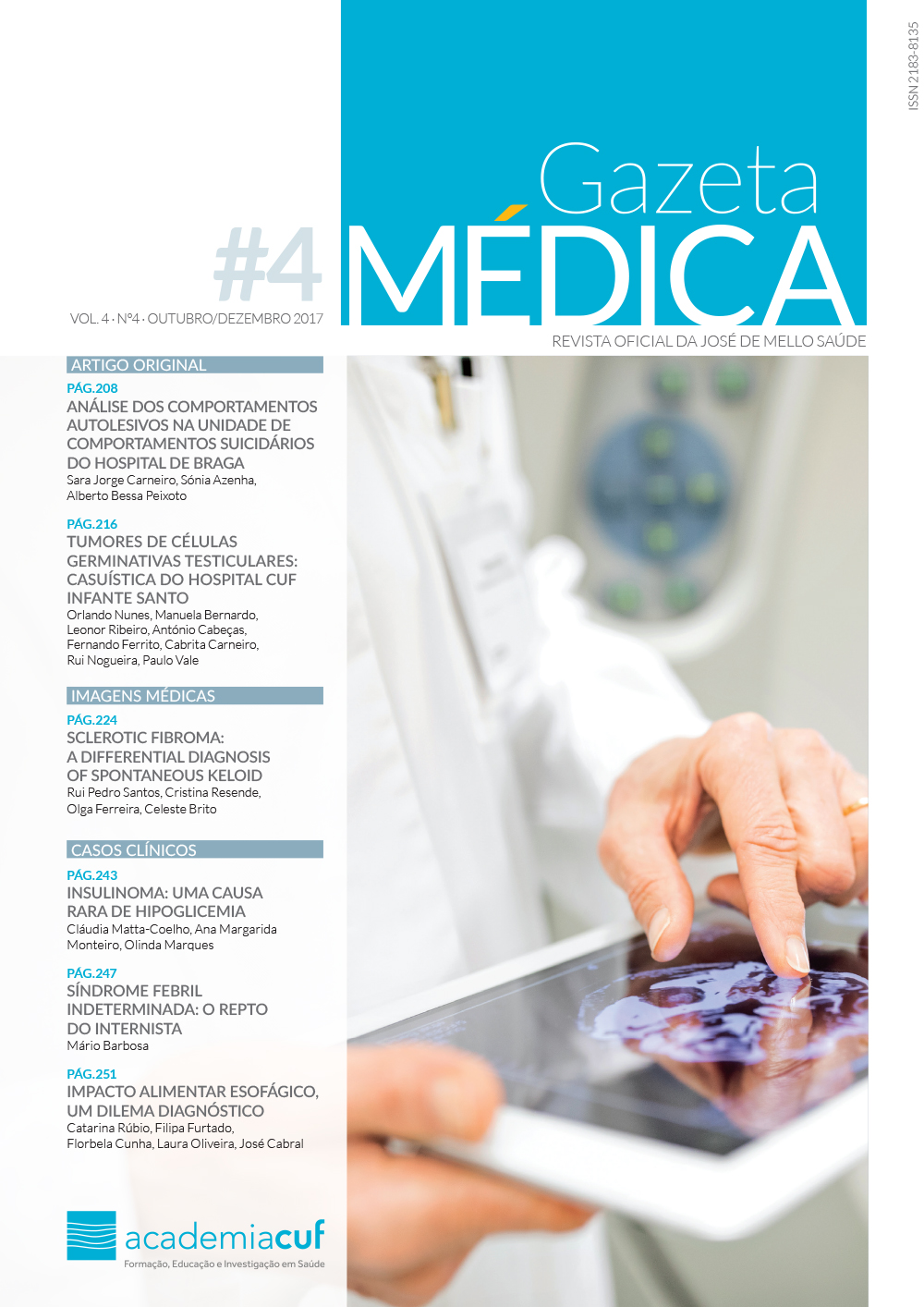Schnitzler Syndrome: A Clinical Entity to be Considered in Patients with Chronic Urticaria
Síndrome de Schnitzler: Entidade Clínica a ser Considerada em Doentes com Urticária Crónica
Main Article Content
Abstract
INTRODUCTION: The charring of rare clinical conditions where the clinicians can significantly change patients’ management is relevant, it alerts to its recognition and permit to share knowledge with potential clinical impact.
CASE REPORT: We present a 32-year-old male that has been previously evaluated in Dermatology and Immunoalergology appointments due to chronic urticaria. He had urticarial rash for eight years. He complained of asthenia and arthralgia. He has been on anti-histaminics and posteriorly cyclosporine has been added without complete resolution of symptoms. He has been referred to Internal Medicine appointment due to elevated sedimentation velocity rate (65 mm). In the diagnostic study, an IgM/K monoclonal gammopathy was identified. Schnitzler syndrome was diagnosed and the patient began with colchicine with total resolution of symptoms.
DISCUSSION: Schnitzler syndrome is a rare condition with a still not completely understood physiopathology. It has been known as an auto-inflammatory condition. Schnitzler syndrome diagnosis requires high suspicion, so descriptions as ours are important to give notoriety to this condition.
Received: 13/04/2017 - Accepted: 24/11/2017


